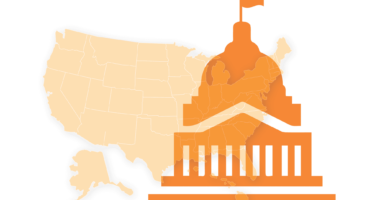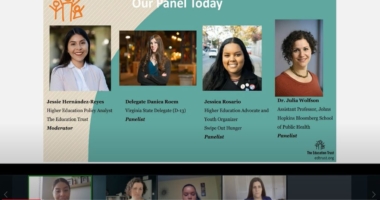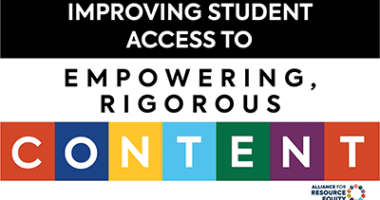Ending Student Hunger & Homelessness
As many as 1 in 6 kids struggle with a lack of access to food, and prior to the coronavirus outbreak, public schools identified 1.4 million children and youth in P-12 who were experiencing homelessness, and the U.S. Department of Education estimated that another 1.3 million children under 6 experienced homelessness.
Hunger and homelessness were serious issues prior to the pandemic, and COVID-19 has only made them worse. Disparities in access to food still exist along racial lines, with 18% of Black households and 16% of Latino households, as opposed to 10% of all households, reporting food insufficiency during early summer 2021.
And students experiencing homelessness are disproportionately students of color, students with disabilities and English learners. High school students who experience homelessness are more likely to be pregnant or parents, and also more likely to be LGBTQ+. Homelessness is equally prevalent in rural, suburban, and urban areas. Most students experiencing homelessness are staying with other people temporarily due to lack of alternatives when they are first identified by public schools.
It’s important to remember that hunger and homelessness are fundamental issues that impact all aspects of a student’s experience in school — including their ability to learn. Research points to the link between food insecurity and lower math achievement in kindergarten, and lower math and reading gains from kindergarten to third grade.
Ensuring access to food and stable housing is critical; and there are unprecedented resources to help. In 2021, the U.S. Department of Agriculture announced that it will reimburse schools and child care centers for providing free meals to all students this school year. In addition to all students having access to school meals, families have access to the Pandemic-Electronic Benefit Transfer Program (P-EBT), which allows families to directly receive financial assistance for food when children are not in school. Beginning in October 2021, families who receive benefits from the Supplemental Nutrition Assistance Program (SNAP) will see an increase. While a welcome relief, these efforts alone cannot end food insecurity and eliminate the racial divide in access to nutritious food.
To help families at risk of or facing eviction, local liaisons are connecting with eviction courts, legal aid, housing agencies, and realtors; they are also engaged in public awareness campaigns to help families understand their legal recourse, and get connected to emergency rent relief and utility assistance. It is vital that schools be a part of emergency rental assistance distribution, either directly or indirectly, which may mean forging new partnerships, and placing housing and resource navigators within schools (whether funded through the Emergency Rental Assistance Program, or through ARP ESSER or ARP HCY).
There is room to celebrate the strides being made in improving access to adequate nutrition for students and their families. For example, early data indicates that the changes to the Child Tax Credit are helping to reduce food insufficiency across our country. But we cannot lose momentum. The Education Trust is committed to making sure that every student, especially those who are already hardest hit by COVID-19, have their most basic needs met.

















